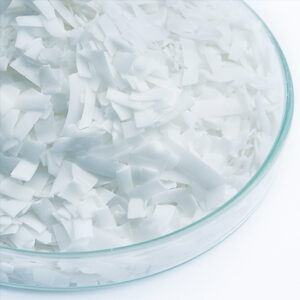
#Polyethylene wax (also known as #PE wax) is a low molecular-weight polyethylene polymer that because of its low molecular weight has wax-like physical characteristics.
There are a variety of methods for producing Polyethylene wax. Polyethylene wax can be made by direct polymerization of ethylene under special conditions that control molecular weight. Another method involves breaking down high molecular-weight polyethylene into lower molecular-weight fractions. A third method involves the separation of the low molecular weight fraction from the high molecular weight polymer.
There are three major characteristics that differentiate one polyethylene wax from another. They are I) Molecular weight, II) Degree and length of polymer branching, III) Monomer/polymer composition. Changing any of these factors will alter the physical characteristics of the polyethylene wax, such as viscosity, hardness, melt point, reactivity etc.
Paraffin wax is usually produced as a by-product of oil refining. It has a molecular weight which is usually less than half that of most polyethylene waxes. Because of this and other differences, paraffin wax usually has a much lower melt point and is softer than most polyethylene waxes.
Polyethylene waxes can be supplied in many forms. They can be supplied in bulk with the use of specialty bulk trailers that are heated. Polyethylene wax can be finished as a prill or atomized powder. Polyethylene waxes can also be ground into various particle sizes. Harder waxes are usually easier and less costly to grind than softer waxes.
Polyethylene waxes have very unique polymer properties that make them useful in many applications. The major functions of polyethylene wax in many formulations are to either provide lubrication and/or provide physical modification of a formula by changing viscosity and/or melting point.
Polyethylene wax – H.S.code 34049020
TRANSPORT INFORMATION
LAND (DOT): Not Regulated for Land Transport
LAND (TDG): Not Regulated for Land Transport
SEA (IMDG): Not Regulated for Sea Transport according to IMDG-Code
Marine Pollutant: No
SEA (MARPOL 73/78 Convention – Annex II)
Ship type: 2
Pollution category: Y
AIR (IATA): Not Regulated for Air Transport
PTC_PE_WAX_COA
